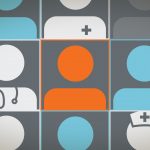Telehealth: The New Frontier for Patient Care
As COVID-19 created the need to avoid person-to-person contact, telehealth finally started to emerge as an essential tool for staying in touch with patients and families. CMS began to relax restrictions on the use of telehealth but as of this writing, policies are still changing almost daily regarding what will be reimbursed – and at what rate – when telehealth is used.
While CMS technically defines “telehealth” as having both audio and visual components, let’s think about the term encompassing all virtual or remote patient care through technology. And let’s presume that all platforms or tools in this discussion are fully HIPAA compliant.
A lot of the recent telehealth focus has been centered on video chats, clinician-to-patient. So, let’s start there, then explore just a few of the exciting possibilities emerging or being refined by the need for remote care.
Video connections of care. Being able to talk via live video with a patient or family caregiver is a big advantage. Video conferences can efficiently include a larger cross-section of interdisciplinary team members or fold in more family members for updates and decisions. Yet the instant visual that live video provides can offer so much more than just a care conversation. Through the camera’s eye, clinicians can do a lot of visual patient assessments, review medications by reading labels, give family caregivers instruction on tasks like properly filling a syringe, and even lay eyes on home settings to review social determinants of the environment.
Another major benefit of having a video connection into a patient’s home is the ability to combat social isolation and loneliness. Even before COVID-19, many hospice patients spent at least some major chunks of time alone. If patients have devices with easy-to-use apps or video software, they can use the connection to video chat with family and friends no matter where they live.
Remote diagnostics. Wearable digital devices, linked to appropriate apps, are already able to measure vitals, such as heart rate, body temperature and glucose levels. As interfaces between these types of devices and telehealth apps become more available, clinicians will be able to check a patient’s vitals remotely at any moment throughout the day (with the patient’s permission and participation, of course).
Patient self-assessments. Telehealth apps also may include patient self-assessment tools (or tools that can be used by a family caregiver to record answers from the patient). Established systems, such as the Wong-Baker scale and Edmonton Symptom Assessment System, can monitor daily reports of patient status, including pain, anxiety, tiredness, appetite, shortness of breath and constipation.
Clinical team alerts. When predetermined levels of change are registered among any of the data, telehealth tools could instantly alert the clinical team to check on the patient immediately.
Approved family member updates. With approved access and password-protected logins, consented family members, friends or other health proxies could check on the assessment status of the patient anytime and from anywhere. No longer would a daughter or son across the country or on the other side of the world have to wonder about mom or dad’s condition that day, no matter what time zone they live in.
Our healthcare system is at the mere front of the revolution telehealth can bring to help deliver better patient care and improved patient/family experiences. Stay tuned to Transcend’s blog posts and podcasts for updates on telehealth usage and success stories.











